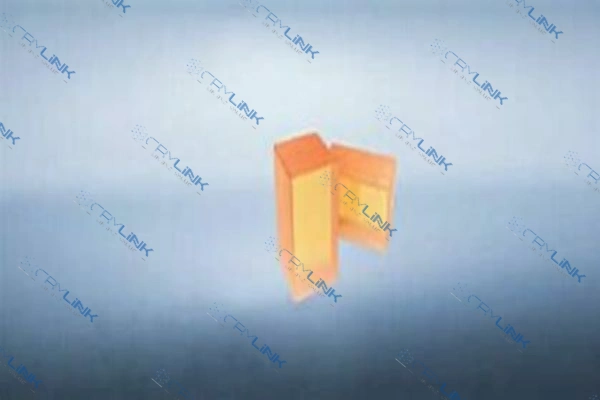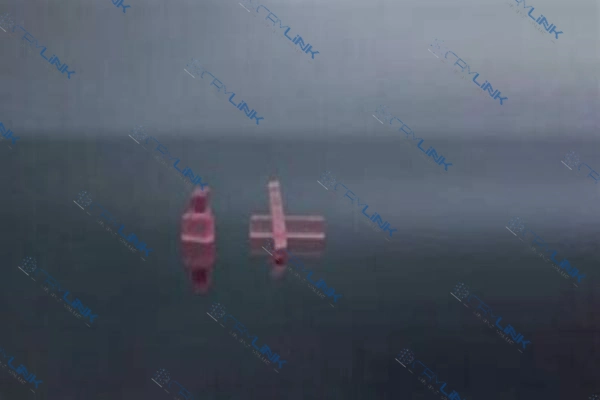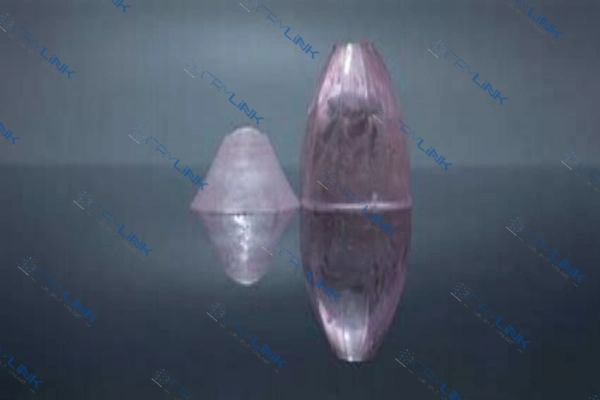Introduction
In the world of photonics, laser crystals play a pivotal role in advancing a multitude of applications. These crystals, with their distinct properties, catalyze progress in industries ranging from telecommunications to medical technology. In this article, we delve into the top five laser crystals, unraveling their unique characteristics and diverse applications.

Fe:ZnSe (Iron-doped Zinc Selenide)
Unmatched Quality of Fe:ZnSe Crystal
The high optical quality of Fe:ZnSe crystals sets them apart. Minimal scattering loss and excellent mechanical properties make these crystals robust and capable of withstanding demanding applications. Their low scattering loss ensures maximum output power is maintained, an aspect that is of the utmost importance in laser systems.
In addition to their superior optical quality, the mechanical properties of Fe:ZnSe crystals ensure durability. These crystals can resist abrasion and have high hardness levels, making them suitable for applications involving intense light or radiation exposure without undergoing physical degradation.
Multitude of Applications for Fe:ZnSe Crystal
The unique properties of the Fe:ZnSe crystal extend its use to an array of applications. Its broad emission range and high efficiency make it invaluable in biomedical imaging. It provides high-resolution, non-invasive imaging capabilities, which allow healthcare professionals to examine tissues and structures within the body with precision.
Beyond healthcare, Fe:ZnSe’s applications in gas sensing are noteworthy. By tuning the laser to specific wavelengths, different gases can be identified and detected, making Fe:ZnSe a vital tool in environmental monitoring and safety applications.
Additionally, the wide tunability and high-power continuous wave operation of Fe:ZnSe crystals make them promising candidates for advanced photonics research tools like free-electron lasers and optical parametric oscillators. These applications demonstrate the crystal’s versatility and its capacity to shape future technological advancements.

Nd: GdVO4 (Neodymium-doped Gadolinium Orthovanadate)
Unveiling the Unique Properties of Nd: GdVO4 Crystal
Nd: GdVO4 crystal is highly admired in the laser world, particularly for its outstanding properties that set the stage for high-power and high-frequency applications. One of its key attributes is its high thermal conductivity, significantly higher than other common laser crystals. This higher thermal conductivity ensures that heat dissipation is efficiently managed even under high-power operations. This prevents overheating and safeguards the laser system’s stability, thus maintaining consistent laser output and preventing potential damage to the system.
Another exceptional property of Nd: GdVO4 is its low lasing threshold. A lower lasing threshold means that less energy is required to achieve laser action, which results in a more energy-efficient operation. This efficiency translates into lower operating costs and contributes to the crystal’s suitability for applications that demand high-frequency and high-power operations.
Harnessing the Power of Nd: GdVO4 Crystal
The Nd: GdVO4 crystal’s unique properties make it ideal for a multitude of applications. For instance, its high thermal conductivity and low lasing threshold make it perfect for high-power compact solid-state lasers. These lasers are integral in industries such as manufacturing and precision machining, where they are employed in cutting, drilling, and engraving tasks.
Furthermore, Nd: GdVO4’s efficiency and reliability also make it suitable for lasers used in scientific research. Researchers often require lasers that provide stable and reliable light output, and Nd: GdVO4 crystals play a pivotal role in meeting this demand. They are a core component in a myriad of scientific lasers used in physics, chemistry, and material science research, aiding in breakthroughs and new discoveries.
In essence, the Nd: GdVO4 crystal’s attributes make it an invaluable asset in both industrial and scientific fields, thus marking its significance in the laser crystal hierarchy.

Er:YLF (Erbium-doped Yttrium Lithium Fluoride)
Delving into the Properties of Er:YLF Crystal
Erbium-doped Yttrium Lithium Fluoride (Er:YLF) is a prominent laser crystal characterized by its unique emission in the mid-infrared region. What sets Er:YLF apart is its capacity to provide high beam quality, making it an asset for precision applications.
Its lower quantum defect compared to other crystals means that less heat is generated during the lasing process. This results in less thermal stress and, consequently, less optical distortion, leading to a high-quality output beam. This high beam quality is beneficial for applications that require precision and consistency in the emitted laser light.
Moreover, Er:YLF also exhibits high mechanical strength and chemical stability. These characteristics contribute to its durability and long operational life, making it a reliable choice for long-term applications.
Exploiting the Potential of Er:YLF Crystal
Er:YLF crystals play a significant role in various sectors due to their unique properties. Their high beam quality and mid-infrared emission make them a popular choice in the field of medicine. For instance, they are employed in medical lasers used for procedures in dermatology and dentistry. Their high absorption in water, coupled with their high beam quality, allows for precise cutting and ablation of tissues, improving the efficacy and safety of these procedures.
Furthermore, the crystals’ strong emission in the mid-infrared region is also beneficial in telecommunications and remote sensing applications. For example, they are used in lasers for optical fiber communications and atmospheric remote sensing. In these applications, their high beam quality and ability to emit at specific wavelengths enable effective and efficient communication and sensing capabilities.
In a nutshell, the unique properties of Er:YLF crystals, coupled with their wide-ranging applications, underscore their importance in the realm of laser technology.

Er:GGG (Erbium-doped Gadolinium Gallium Garnet)
Profiling the Er:GGG Crystal
The Er:GGG (Erbium-doped Gadolinium Gallium Garnet) crystal is an exceptional laser crystal noted for its output in a wavelength range that is highly absorbed by water and biological tissues. This unique emission characteristic is due to the presence of erbium ions, which, when excited, emit light in the 2.7-3.0 µm range, a region where water and biological tissues show high absorption.
Er:GGG also stands out for its excellent thermal and mechanical properties. The crystal’s thermal conductivity is relatively high, allowing efficient dissipation of heat and ensuring stable operation under high-power conditions. This thermal stability is critical in maintaining the consistency of laser output and prolonging the service life of the laser system.
Embracing the Versatility of Er:GGG Crystal
The unique attributes of Er:GGG crystals translate into their wide applicability, especially in the medical field. Their output wavelength closely aligns with the absorption peak of water and biological tissues, which makes these crystals ideally suited for medical lasers. These lasers are used in various surgical procedures, including laser scalpels for precision cutting and coagulation, and lasers for non-invasive treatments like photocoagulation and photodisruption.
In the realm of scientific research, Er:GGG crystals are also invaluable. They are utilized in devices that require operation at specific wavelengths, like those used in spectroscopic studies and environmental monitoring. Their thermal stability and reliable output make them suitable for systems requiring high-powered and continuous operation.
The multifaceted applications of Er:GGG crystals underscore their versatility and significance in both scientific and medical fields, marking them as a vital player in the laser technology landscape.

Cr:ZnSe (Chromium-doped Zinc Selenide)
Probing into the Characteristics of Cr:ZnSe Crystal
Chromium-doped Zinc Selenide (Cr:ZnSe) is a remarkable laser crystal renowned for its broad emission bandwidth and high optical gain. Cr:ZnSe crystals operate in the mid-infrared region, emitting light in the 2-3 µm range. This is a crucial range for many applications as it allows for efficient interaction with certain gases and biological tissues.
Cr:ZnSe crystals also exhibit broad tunability, meaning the output wavelength can be precisely controlled within its emission range. This offers flexibility and precision, making Cr:ZnSe an invaluable resource in applications demanding specific wavelengths.
On top of these characteristics, Cr:ZnSe boasts high optical gain, which means it can amplify light very efficiently. This property is critical for achieving powerful laser output and enhancing the overall performance of laser systems.
Celebrating the Versatility of Cr:ZnSe Crystal
Given its exceptional attributes, the Cr:ZnSe crystal finds wide-ranging applications across various sectors. For instance, its broad emission bandwidth and high optical gain make it a perfect fit for defense applications, such as infrared countermeasures and target designation.
In the field of environmental science, Cr:ZnSe plays a significant role in pollution detection and monitoring. Its tunability allows for the identification and measurement of different gas species, contributing to the development of more sustainable environments.
Moreover, the crystal’s unique properties extend its utility to the medical field, particularly in biomedical imaging. Cr:ZnSe crystals can generate high-quality, detailed images, making them a powerful tool in diagnosing and treating various health conditions.
In a nutshell, the unique properties of Cr:ZnSe crystals, coupled with their myriad of applications, solidify their position as a key player in laser technology.
Conclusion
Laser crystals continue to underpin technological advancements in diverse sectors. As we’ve explored, Fe:ZnSe, Nd:GdVO4, Er:YLF, Er:GGG, and Cr:ZnSe each offer unique properties that facilitate various applications, driving the innovation in photonics and beyond.
FAQ
- What are the unique characteristics of Nd:GdVO4 laser crystals? Nd:GdVO4 crystals are recognized for their high thermal conductivity and low lasing threshold, making them suitable for high-power and high-frequency applications.
- Where are Er:YLF laser crystals typically used? Er:YLF laser crystals are commonly used in medical applications, including dermatology and dentistry, as well as in telecommunications and remote sensing.
- What makes Cr:ZnSe laser crystals special? Cr:ZnSe crystals are valued for their wide emission bandwidth, high optical gain, and broad tunability. They are widely used in defense, environmental science, and biomedical imaging.
- How does Fe:ZnSe contribute to biomedical imaging? Fe:ZnSe, with its broad emission and absorption bands, is widely used in biomedical imaging, gas sensing, and infrared countermeasures.
- What are some common uses for Er:GGG? Er:GGG is used in a variety of scientific and medical equipment, particularly those that require operation at specific wavelengths.







